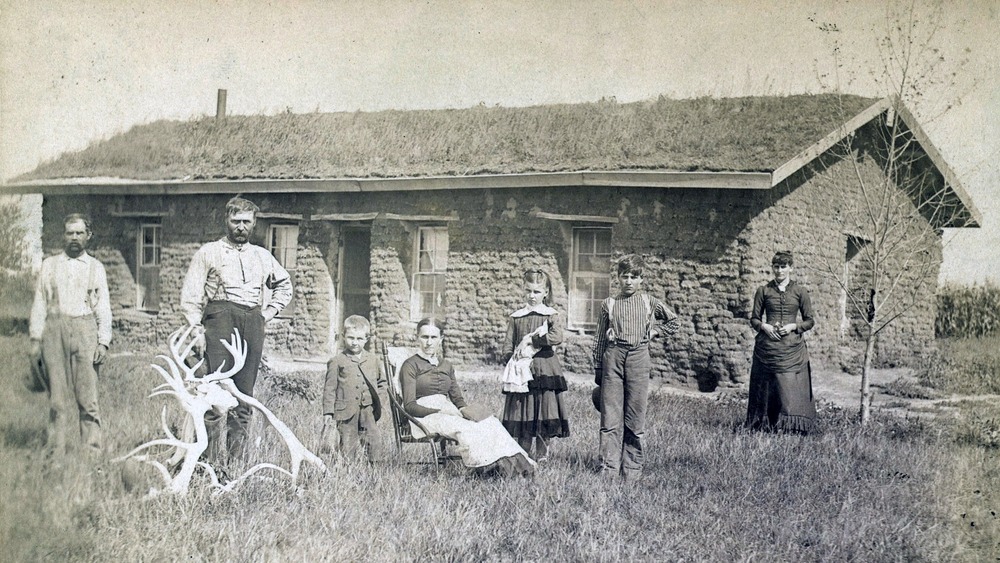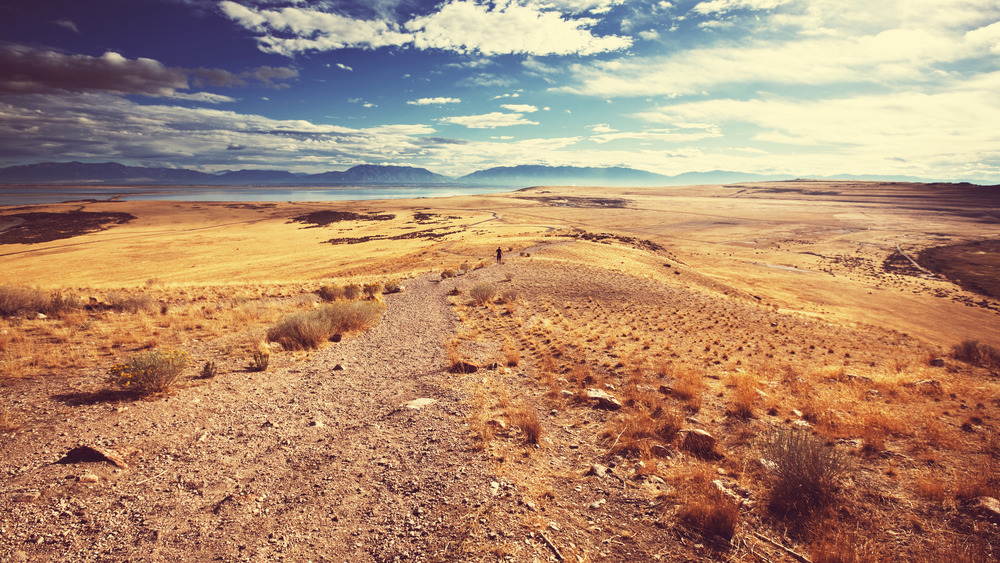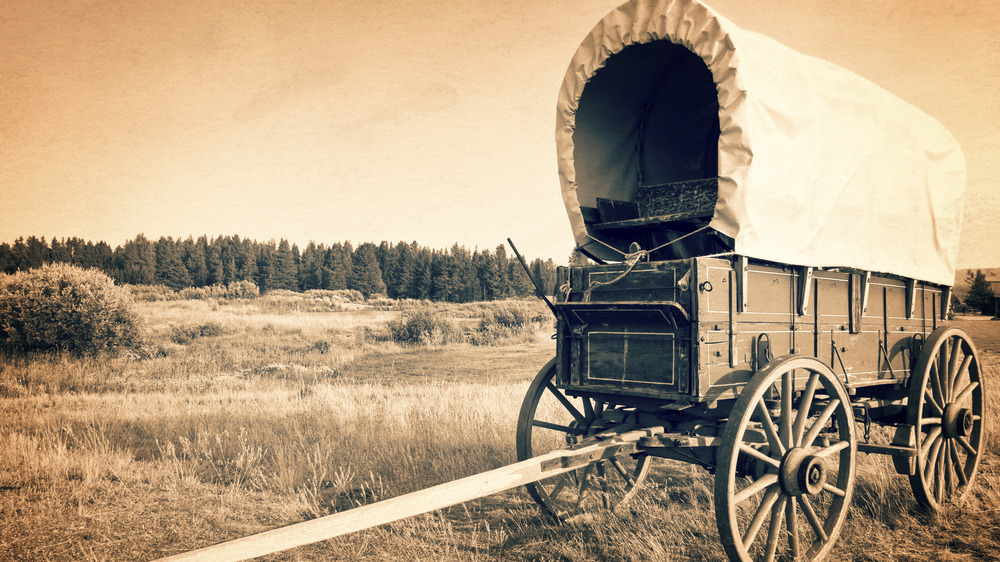The Backbreaking Truth Of Life In A Sod House On The American Frontier
After the Homestead Act became law in 1862, U.S Citizens and immigrants filed four million claims as they searched for a better life and the 160 acres of free land the legislation promised. President Abraham Lincoln stated in a July 4, 1861 address that the government sought "to elevate the condition of men, to lift artificial burdens from all shoulders and to give everyone an unfettered start and fair chance in the race of life," according to History.com.
The Homestead Act advanced that idea and 270 million acres of Western land was settled as a result. It wasn't easy, though, to claim and settle the space. Homesteaders paid a filing fee and had to live on their section for five years, building a home and creating a farm. Only then could settlers "prove up" and claim their parcel officially.
For those settlers on the Great Plains, the area offered challenges. The extreme summer heat, with temperatures hitting over 120 degrees, and the season's drought, tornadoes, fires, floods, and grasshoppers made farming difficult. In the winter, settlers suffered through blizzards. One 1886 blizzard, according to Our Story, became so bad that "horses and cattle died when their breaths froze over the ends of their noses, making it impossible for them to breathe."
The flat land of the prairie made building a home exhausting. Since stones and trees were often scarce, many homesteaders used prairie sod, a substance that includes a layer of earth intertwined with grass and its roots.
How to make a sod house
According to Nebraska Studies, the right grass is important. Nebraska homesteaders, for instance, "would search for fields of buffalo grass, little blue stem, wire grass, prairie cord grass, Indian grass, and wheat grass."
Sod was cut with a spade or a plow and then rudimentary bricks were created. To build a 16X20-foot house, about 3,000 bricks were required, Our Story added. Homebuilders needed to use the bricks the same day they were created or they would crumble. "Freshly cut sod bricks were laid root-side up in order for the roots to continue to grow into the brick above it. Over time, the bricks in fact grew together to form a very strong wall."
Sod homes, or "soddies," featured earthen floors and, often, roofs as well ... although those were also made with wood planks or shingles, in those instances when wood was available. A sod roof could weigh more than three tons, said Notes from the Frontier.
Sod houses on the prairie
Door and window frames were inserted and sod was arranged around them. Sometimes homes with sod ceilings dripped water, dirt or bugs, so settlers hung sheets to catch any debris from falling into the room, reported Earth Homes Now. Another way to protect from the elements and animal life was to line the roof with tarpaper.
Despite the primitive building materials, the thick walls of the home protected its owners from the heat and cold. Since wood wasn't usually available, for warmth settlers burned buffalo and cow chips — basically, dried manure — as well as hay twisted into bundles, said Travel South Dakota.
Life on the prairie was hard and lonely. Some pioneers left before the five years were completed. "Some people ran out of money before they got a decent crop to sell," said the Prairie Museum of Art + History. "Others just got tired of the struggle. They moved on, or moved back home. Those who stayed helped create the communities we live in today."


